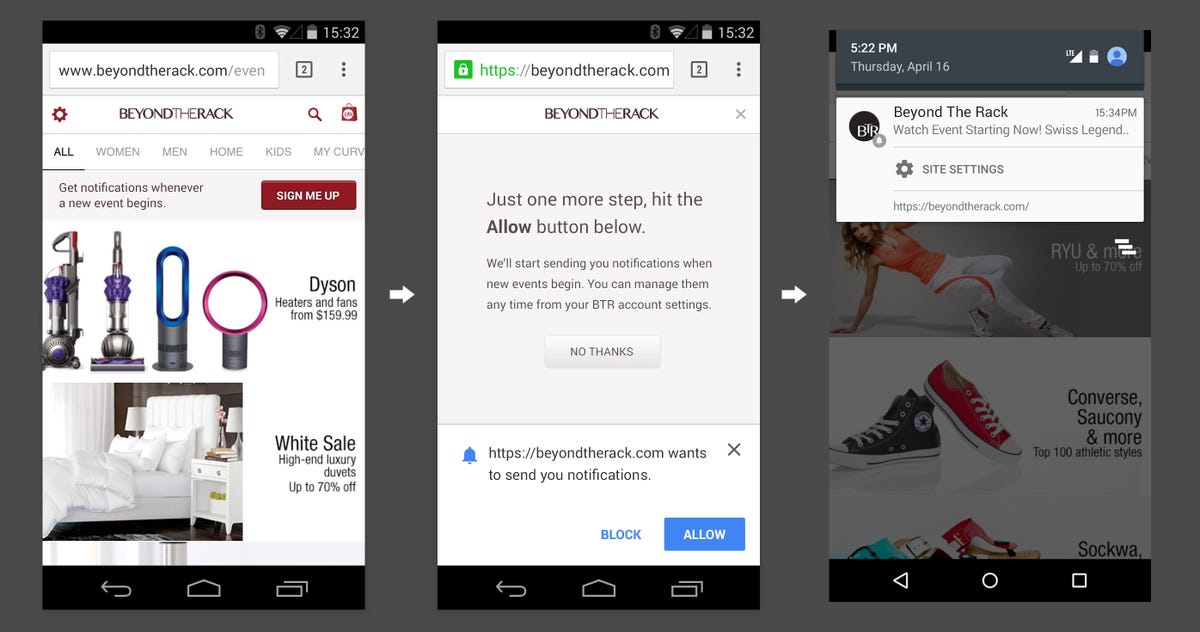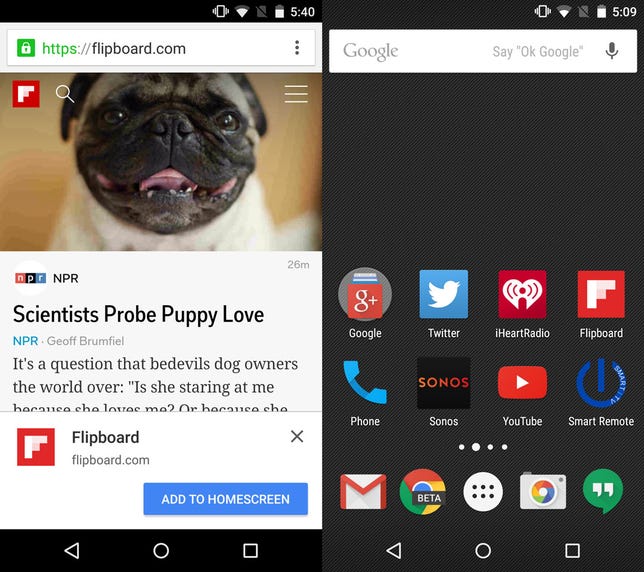
Stephen Shankland/CNET
A Google project called Fizz is beginning to pop, letting programmers make Web apps on mobile devices livelier and easier to use.
The Android version of Chrome 42, released last week, brings some new Fizz features to better match what’s possible with native software written for operating systems like Google’s Android and Apple’s iOS. One big Fizz feature is that Web apps — those written to run in a browser — now can deliver pop-up notifications just as native apps already can.
Google’s Fizz is a new chapter in the fight by Web allies to reconquer territory lost to mobile operating systems. The Web’s universality conveniently spans multiple operating systems, from Windows to Mac and beyond. With Web apps, there’s no need to worry that Google Maps might be missing from Windows 10 or that Apple Photos isn’t on Android.
But unless the Web can match the performance and features of apps that are native to mobile operating systems, it’s not likely to win. Thus, Google’s project Fizz.
“The Web makes it easy to navigate and discover new and diverse experiences,” by just typing in a Web address and not fussing with software installation, said Alex Komoroske, senior product manager for Chrome’s open Web platform. But Web apps don’t always keep pace with native apps. “We’re trying to bring features in from native apps in a responsible way.”


Fizz features
Three new Fizz features arrived with Chrome 42:
- First, push notifications will mean Web apps can alert you about things like updates from your social network or new email from your spouse — once you agree to receive the notifications. Companies Google signed up to use push notifications include Beyond the Rack, eBay, Facebook, Pinterest, Product Hunt, Sports Illustrated’s Fansided and Vice News
- Second, Chrome will promote Web apps that meet certain criteria, offering to make them more easily accessible via an icon on your phone’s home screen. One criterion is that you must visit the website on two separate occasions within two weeks, for example.
- Third, a technology called the Web manifest will let programmers package useful tidbits of information — for example an icon for the the Web app or a message it can deliver if you try to use it when there’s no network connection.
They join an earlier Fizz feature that lets Web apps work better when they’re offline — a common occurrence for people on planes, subways and rural areas with no phone network.
Future Fizz features
One Fizz feature that’s still in development is synchronization, which will let Web apps update themselves even when they’re not open. That’ll make it possible for Yahoo Mail to be up-to-date the moment you open the Web app so you don’t have to wait for new data to download. Or you could schedule a tweet on a Twitter app that would be delivered when you got back into network range.


Another future Fizz project is durable storage, which will help people make sure Web apps are available even when there’s no network. Along with offline support, push notifications and synchronization, it’s powered by a technology called Service Workers that Google has championed.
The Web’s power stems from its universality: no operating system these days can ship without a browser. But several of the technologies Google is working on aren’t yet standardized and don’t appear outside of Chrome. Mozilla is working on Service Worker support, for example, but Microsoft so far only has said it’s evaluating it, and there’s no word from Apple’s Safari team.
In the long run, Komoroske is confident they’ll all be hammered into standards and adopted more widely so people with other browsers besides Chrome can benefit, and ultimately so the Web itself can..
“They’re important enough to developers that I’m optimistic,” Komoroske said.




